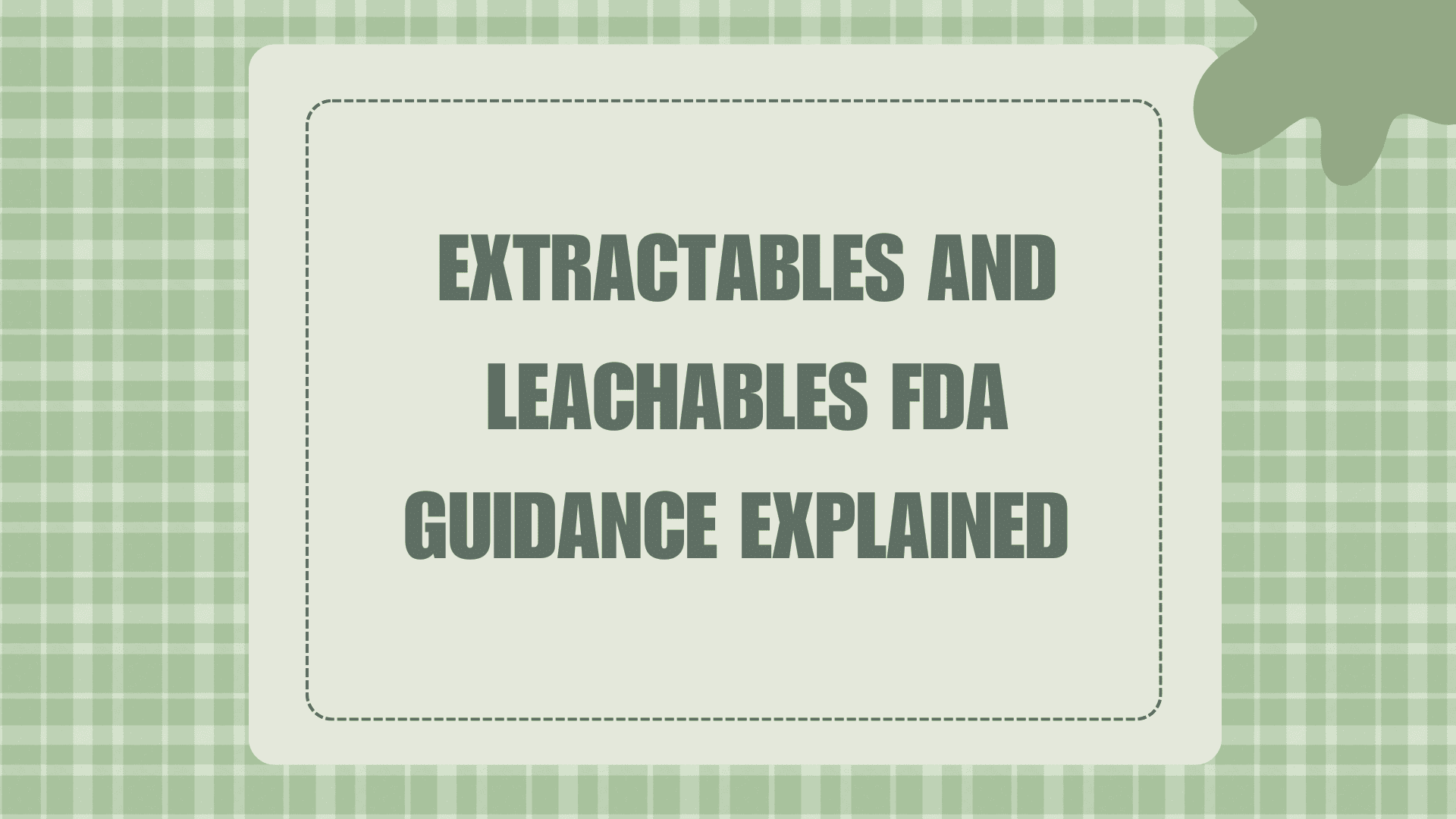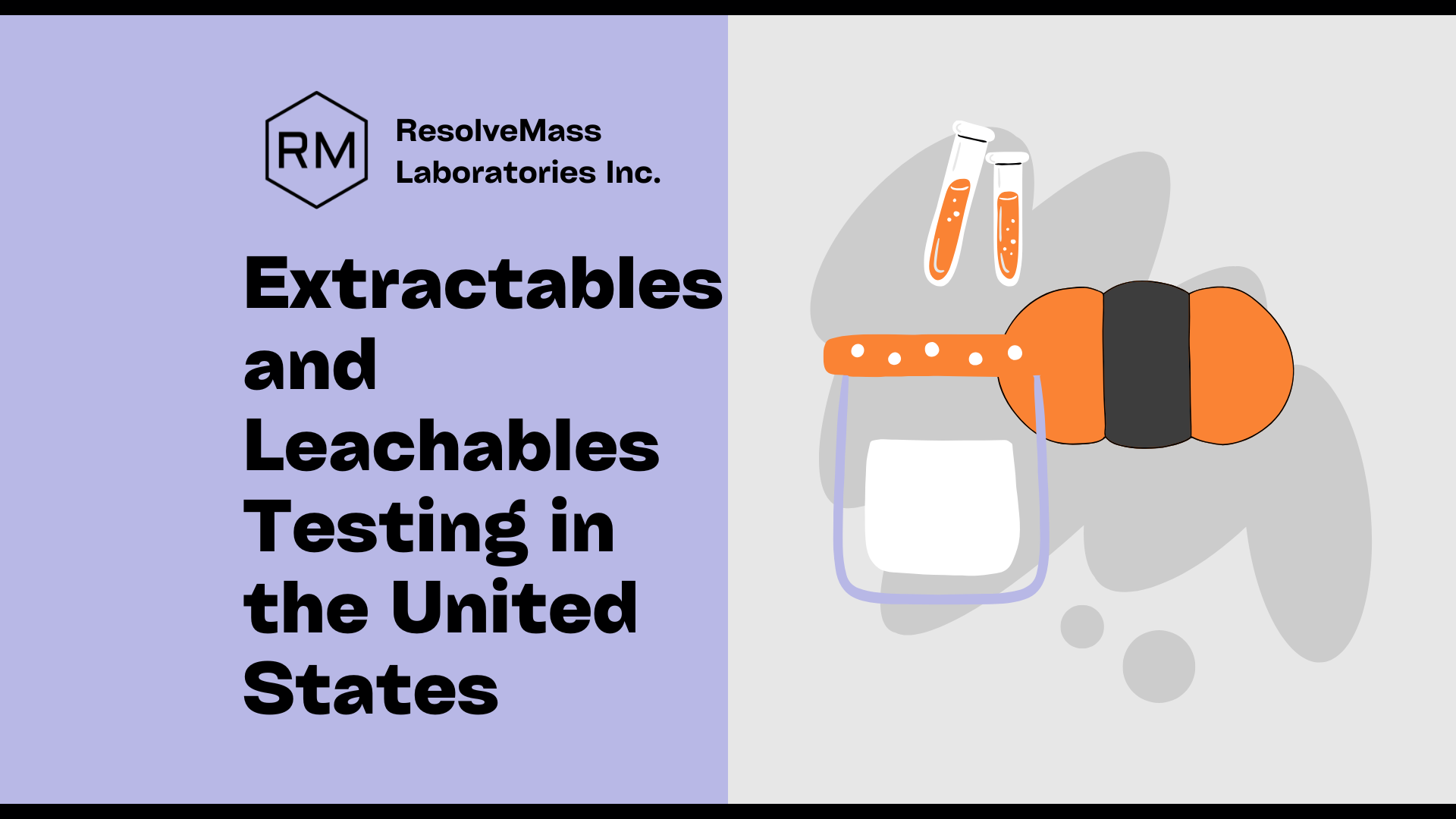Understanding Extractables and Leachables FDA Guidance is critical for pharmaceutical and medical device manufacturers aiming for smooth regulatory approval. In simple terms, the FDA expects companies to identify, measure, and control chemical compounds that may migrate from packaging, containers, or medical devices into a drug product or directly into the human body. These studies are not optional—they are essential to patient safety, since even trace levels of harmful compounds can cause risks. By addressing extractable and leachable FDA requirements early, companies can avoid costly regulatory setbacks and strengthen trust in their product safety.
This blog provides a detailed overview of FDA leachables and extractables requirements. You will find practical insights, regulatory considerations, and proven study approaches that help ensure compliance while protecting patient health. The goal is to simplify complex technical language into clear, actionable steps that manufacturers can follow with confidence.
🔎 Quick Summary of This Article
- What are Extractables and Leachables (E&L)? – Compounds that can migrate from materials into drugs or patients.
- FDA’s Role – Enforcing systematic risk assessment and validated testing.
- Key Guidance Areas – Analytical testing, toxicological risk, study designs, and reporting standards.
- Industry Applications – Pharma, biotech, and medical devices must comply with extractable leachable guideline FDA requirements.
- Compliance Support – CROs like ResolveMass Laboratories provide tailored study designs, fast turnaround, and regulatory-ready data.
Each of these points reflects the FDA’s commitment to safeguarding patients while giving manufacturers a structured pathway to approval.
What are Extractables and Leachables in FDA Guidance?
The FDA defines extractables as compounds released from packaging or device materials under aggressive laboratory conditions. Leachables, however, are compounds that actually migrate into a drug or the body during real-world use. Both matter because extractables show the “worst-case scenario,” while leachables reveal actual patient exposure risks.
Within Extractables and Leachables FDA Guidance, manufacturers must evaluate both categories and demonstrate that they pose no health concerns. Extractables serve as predictive markers of contamination risk, while leachables highlight compounds requiring toxicological assessment to ensure patient safety.
📌 For more details, see E&L FAQs.
Why Does the FDA Require Extractables and Leachables Testing?
The FDA mandates E&L testing to prevent harmful effects such as toxicity, cancer risk, or immune reactions caused by chemical migration. Any product or device in direct or indirect contact with patients must comply with strict chemical safety standards to protect long-term health.
The agency emphasizes:
- Proactive risk mitigation strategies.
- Use of toxicological thresholds like AET and TTC.
- Reliable analytical data for regulatory filings.
By implementing these requirements early, companies lower the risk of FDA rejection and maintain smoother submission timelines.
👉 Learn more: EL Testing for Regulatory Submission.
Key Elements of Extractables and Leachables FDA Guidance
The FDA provides a structured approach that every manufacturer should follow:
| Requirement | FDA Expectation |
|---|---|
| Study Design | Risk-based and product-specific |
| Extractables Testing | Exaggerated solvent/temperature conditions |
| Leachables Testing | Realistic product-use scenarios |
| Analytical Techniques | LC-MS, GC-MS, ICP-MS, NMR |
| Toxicological Risk | Thresholds such as AET & TTC |
| Documentation | Complete, FDA-ready reports |
This ensures that studies are tailored to each product instead of applying a one-size-fits-all model. Manufacturers must present data that directly reflects their product risks.
📌 ResolveMass provides custom EL study design services aligned with FDA and USP guidelines.
FDA Extractables and Leachables Guidance for Medical Devices
Medical devices that contact the body—especially implants—pose higher risks. That’s why FDA leachables and extractables guidance requires:
- Compliance with ISO 10993-18 for chemical characterization.
- Biological safety evaluation of leachables.
- Extractables studies simulating maximum exposure scenarios.
For example, pacemakers, stents, and catheters require detailed E&L studies. Compliance reduces the chance of unexpected toxicological issues post-launch.
👉 See more: EL Testing for Medical Devices and ISO 10993-18 Testing.
Analytical Techniques for Extractables and Leachables
The FDA stresses validated and sensitive methods to detect E&L compounds. The most common approaches include:
- LC-MS/MS for detailed organic compound profiling.
- GC-MS for volatile extractables.
- ICP-MS for elemental impurities.
- NMR for structural characterization.
Often, a combination of these techniques is applied for comprehensive results.
📌 For details, see Analytical Techniques for E&L Testing.
Extractables and Leachables FDA Guidance PPT & Training
The FDA encourages organizations to train their staff on E&L processes. Many companies use Extractables and Leachables FDA Guidance PPT modules to standardize knowledge among regulatory and quality teams.
Well-prepared teams detect risks earlier, streamline study execution, and prepare stronger FDA submissions. This proactive training saves time and prevents compliance delays.
ResolveMass also offers customized training and regulatory interpretation for company-specific needs.
How to Conduct Extractables and Leachables Studies
Conducting FDA-compliant studies typically involves:
- Defining study scope (materials, drug packaging, or devices).
- Performing extractables studies in controlled lab conditions.
- Conducting leachables studies in real-use conditions.
- Comparing findings against AET and TTC thresholds.
- Compiling full FDA-ready reports.
This systematic approach avoids duplicate testing, lowers costs, and strengthens the FDA submission package.
👉 Full guide: How to Conduct E&L Studies.
Cost and Timelines for FDA E&L Testing
The cost and time required depend on product complexity:
- Simple packaging systems → faster and lower-cost studies.
- Complex medical devices → higher cost with extended timelines.
Factors such as number of materials, study design, and analytical tools all affect cost. Partnering early with a CRO like ResolveMass ensures accurate estimates and efficient execution.
👉 See breakdown: Cost of E&L Testing.
Why Choose ResolveMass for Extractables and Leachables FDA Compliance?
ResolveMass Laboratories Inc. offers:
- Experience – Expertise in E&L testing.
- Expertise – Specialists in FDA, USP, and ISO compliance.
- Trust – Transparent and validated methodologies.
- Authority – A proven CRO partner for global FDA submissions.
By working with ResolveMass, companies gain not only accurate testing but also strategic regulatory guidance. This reduces approval risks and accelerates market entry.
👉 Explore our affordable E&L testing solutions and fast-track services.
Conclusion
The Extractables and Leachables FDA Guidance provides a clear framework for ensuring patient safety and regulatory success. By performing extractables and leachables studies, applying toxicological thresholds, and generating thorough FDA-ready reports, manufacturers can achieve faster approval. With support from expert partners like ResolveMass Laboratories, compliance becomes smoother, cost-effective, and strategically aligned with regulatory goals.
👉 Start today with our E&L Testing Services.
Contact ResolveMass for a tailored consultation:
FAQs on Extractables and Leachables FDA Guidance
According to FDA, extractables are compounds released from materials like packaging or devices when tested under extreme laboratory conditions. Leachables, on the other hand, are compounds that actually migrate into the drug or body during real-world use. Both need to be assessed carefully since extractables indicate potential risks while leachables reflect true patient exposure.
E&L testing is required to ensure that no harmful chemicals migrate into a drug or medical device during use. The FDA mandates this testing to protect patients from long-term health risks such as toxicity, immune reactions, or cancer-causing effects. It also helps companies avoid regulatory rejection and ensures their products meet global safety standards.
The FDA expects the use of advanced and validated methods such as LC-MS, GC-MS, ICP-MS, and NMR for E&L studies. Each method detects different types of compounds, and often a combination of techniques is required to get a complete chemical profile. This multi-method approach ensures accuracy and builds stronger FDA submissions.
AET, or Analytical Evaluation Threshold, is the minimum concentration level above which all detected compounds must be identified and assessed. It helps ensure that only relevant compounds are considered during toxicological review. The FDA uses AET to balance patient safety with practical testing limits, making it a crucial part of compliance.
For medical devices, especially implants and devices with long-term contact, the FDA requires strict compliance with ISO 10993-18 standards. This includes thorough evaluation of both extractables and leachables to ensure biocompatibility. By following this guidance, manufacturers can demonstrate device safety and reduce risks after commercialization.
USP guidelines, such as <1663> and <1664>, provide scientific procedures for conducting E&L studies. FDA guidance, however, goes beyond the science and focuses on regulatory enforcement, requiring companies to prove compliance for approval. Together, they form a complete framework for technical testing and regulatory acceptance.
If E&L testing shows unacceptable results, the FDA may reject or delay product approval. Failed studies often mean reformulation, redesign, or additional testing is needed. By consulting experts early, manufacturers can identify risks in advance, minimize chances of failure, and stay on track for faster approval.
References
- Rozio, M. G. (2025). Correcting detection and quantitation bias in extractables and leachables testing. Journal of Pharmaceutical Sciences, 114(4), 1234–1245. https://doi.org/10.1016/j.xphs.2025.01.001
- Balfour, H. (2022, April 29). Advancing extractables and leachables testing. European Pharmaceutical Review. https://www.europeanpharmaceuticalreview.com/article/170814/advancing-extractables-and-leachables-testing/
- Eckford, C. (2024, January 22). Single-use systems to drive E&L testing market growth. European Pharmaceutical Review. https://www.europeanpharmaceuticalreview.com/news/196367/single-use-systems-to-drive-el-testing-market-growth/

